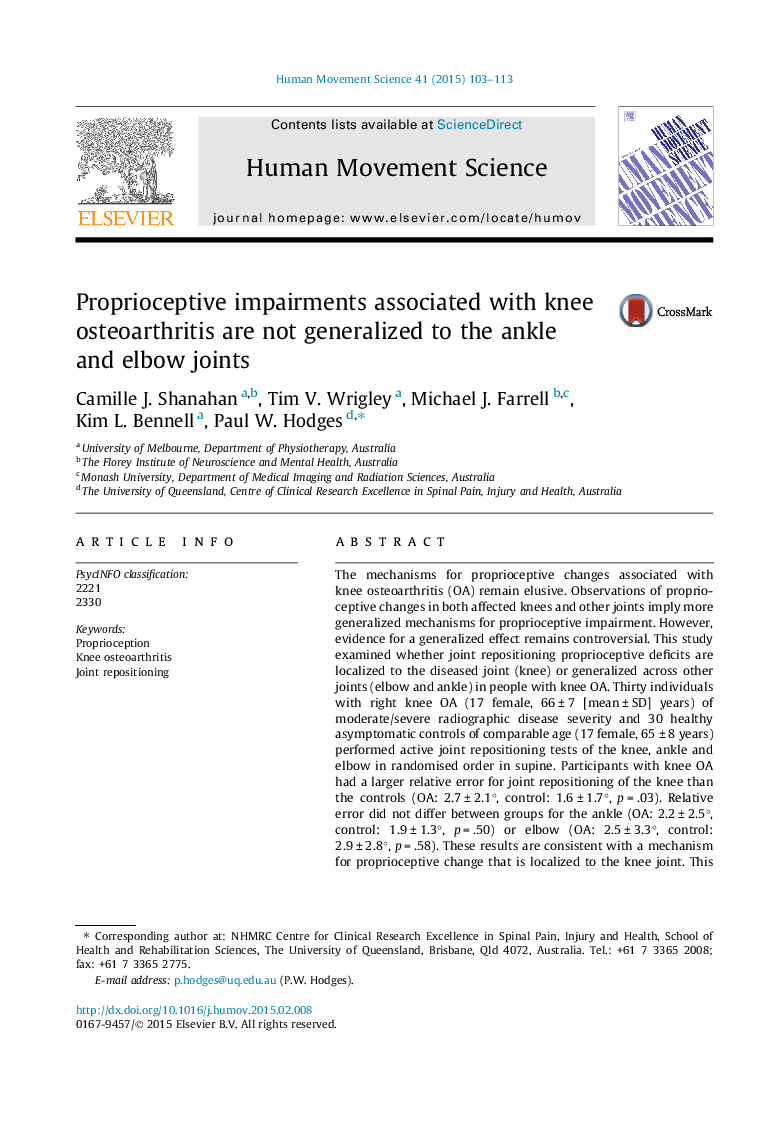| Article ID | Journal | Published Year | Pages | File Type |
|---|---|---|---|---|
| 7291959 | Human Movement Science | 2015 | 11 Pages |
Abstract
The mechanisms for proprioceptive changes associated with knee osteoarthritis (OA) remain elusive. Observations of proprioceptive changes in both affected knees and other joints imply more generalized mechanisms for proprioceptive impairment. However, evidence for a generalized effect remains controversial. This study examined whether joint repositioning proprioceptive deficits are localized to the diseased joint (knee) or generalized across other joints (elbow and ankle) in people with knee OA. Thirty individuals with right knee OA (17 female, 66 ± 7 [mean ± SD] years) of moderate/severe radiographic disease severity and 30 healthy asymptomatic controls of comparable age (17 female, 65 ± 8 years) performed active joint repositioning tests of the knee, ankle and elbow in randomised order in supine. Participants with knee OA had a larger relative error for joint repositioning of the knee than the controls (OA: 2.7 ± 2.1°, control: 1.6 ± 1.7°, p = .03). Relative error did not differ between groups for the ankle (OA: 2.2 ± 2.5°, control: 1.9 ± 1.3°, p = .50) or elbow (OA: 2.5 ± 3.3°, control: 2.9 ± 2.8°, p = .58). These results are consistent with a mechanism for proprioceptive change that is localized to the knee joint. This could be mediated by problems with mechanoreceptors, processing/relay of somatosensory input to higher centers, or joint-specific interference with cognitive processes by pain.
Related Topics
Life Sciences
Neuroscience
Cognitive Neuroscience
Authors
Camille J. Shanahan, Tim V. Wrigley, Michael J. Farrell, Kim L. Bennell, Paul W. Hodges,
